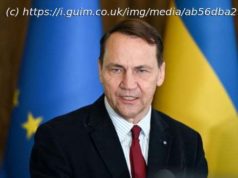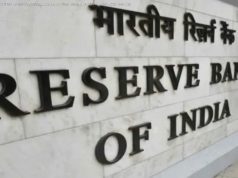There’s a reason Federal Reserve officials may soon start to disagree about whether to continue raising interest rates.
Jerome Powell, chairman of the U. S. Federal Reserve, speaks during Senator Jack Reed’s Rhode Island Business Leaders Day event on Capitol Hill in Washington, D. C., U. S., on Thursday, Sept. 27,2018. Photographer: Andrew Harrer/Bloomberg
Federal Reserve officials have almost unanimously favored gradual interest rate increases over the last two years, but the consensus is set to fray as the temporary boost from a massive but poorly-targeted fiscal stimulus fades.
Strong economic growth figures and a low jobless rate have underpinned the Fed’s monetary tightening, which has taken the federal funds rate to a 2% to 2.25% range while pushing up mortgage rates and borrowing costs for consumers generally. Today’s Fed meeting is unlikely to yield any moves, but another hike is likely in December.
However, inflation is just barely catching up to the Fed’s 2% target after undershooting the goal – in a sign of economic weakness or slack – for much of the recovery from the Great Recession of 2007-2009. Wage growth, too, has lagged, although a recent uptick has been encouraging. Most forecasters do not envision major increases in inflation or wages in the near term.
„Haven’t they spotted that wage growth, while improving, is still modest?“ said David Blanchflower, a former Bank of England official, in an interview. „Ultimately we wait to see the whites of the eyes of inflation then we know what to do.“ The Fed’s congressional mandate is to pursue maximum employment as well as low and stable consumer prices.
This chart shows how inflation has behaved relative to the Fed’s target in recent years.
US inflation has fallen consistently short of the Fed’s 2% target. Richmond Fed
US gross domestic product has gotten a strong bump out of the large fiscal stimulus and tax cuts from Congress in the last two quarters, registering 4.2% annualized growth in the second quarter and 3.5% in the third.
But there is healthy debate within and outside the Fed as to how long that boost will last, and it is likely to intensify now that Democrats’ electoral victory in the House of Representatives points to more legislative gridlock.
Michael Feroli, chief US economist at JP Morgan, told me he still thinks the Fed will hike rates five more times before taking a breather – once in December, and another four times next year.
Still, he said, „by the time you get to September of next year then you have a very vigorous debate about whether going into an actual restrictive territory at that point.“
Feroli, a former Fed economist, sees central bank officials converging around the 3% mark as the „neutral“ rate of interest–one that neither bolsters or softens growth. So effectively, the central bank is just three quarter-point hikes away from that range.
He said one crucial next step for the Fed would be to slowly shift the language of its statement to signal early on to markets that the rate hike cycle might be nearing a pause, perhaps by adopting language used by the new Fed vice chair, Richard Clarida.
In his first public remarks in the No. 2 role, Clarida said: „If the data come in as I expect, I believe that some further gradual adjustment in the federal funds rate will be appropriate.” That contrasted subtly but importantly with the official FOMC statement language, which reads: “The Committee expects that further gradual increases in the target range for the federal funds rate will be consistent with sustained expansion of economic activity.“
The addition of „some“ and the change to „adjustment“ from „increase“ may seem insubstantial, but Fed-speak is a game of incremental addition and subtraction.
Another communications challenge for Fed officials now that inflation has finally caught up to its 2% target is how high central bankers will allow the rate to go. In principle, Fed officials say their 2% inflation target is symmetric–that is, policymakers would like to not only stay near the goal but also to hover as much above it as below it.
However, Feroli said, the apparent strength of the labor market, with the headline jobless rate near historic lows of 3.7%, will make Fed officials reticent about allowing the inflation rate it targets, the personal consumption expenditures index, climb much above 2.25% or so.
“It’s easy to say symmetry, and if you were at 2.3% and the unemployment rate were 5-1/2% that would be one thing. I kind of think in a tight labor market environment about 2.25% starts” to rattle policymakers’ nerves.
That could prompt the Fed to tighten policy a bit more than it otherwise would, but it’s not a scenario Feroli sees as too likely–in part because of a gradual drag on the economy and inflation from ongoing trade wars.
Pedro Nicolaci da Costa is Federal Reserve Reporter at Market News International. He has been writing about economics and financial markets since 2001, at Reuters, The Wall Street Journal and Business Insider. Pedro was a fellow at the Peterson Institute for International Ec…






